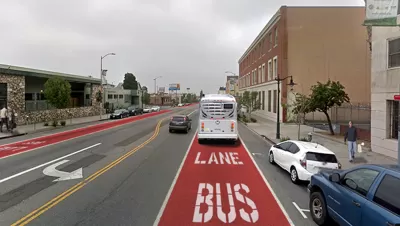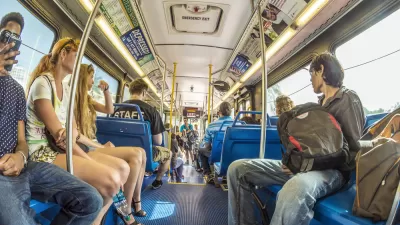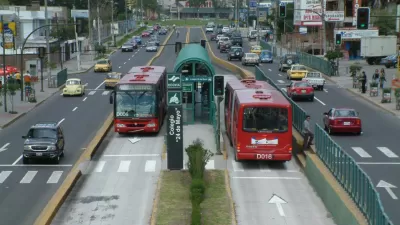More buses and trains alone won't bring back riders; other incentives are needed to boost ridership and encourage new users.

"[N]ew federal spending on transit could mean faster, cleaner, more reliable and more numerous buses and trains," but this may not be enough to bring back riders. Thomas Day argues that state and local governments must also address other issues: "ensuring that lower-income residents can afford to live in central cities, removing parking from many urban streets, and reducing or eliminating transit fares."
"To make the federal spending on transit work, [policymakers] will need to make decisions around land use and affordable housing that will be far less popular" than those around transit, Day writes. "In 2020, suburbs of the 55 U.S. cities with metropolitan populations above 1 million grew at five times the pace of urban centers, according to data analyzed by the Brookings Institution’s William Frey," putting more dependent transit riders farther away from central cities. "If there indeed is a direct relationship between lower-income residents moving away from urban centers and the decline in transit ridership, local officials will need to work harder to ensure sufficient affordable housing near public transit."
Some relatively accessible tools for improving service and getting riders back on transit do exist: "Designating lanes to allow bus rapid transit service to race by other traffic, for example, has the benefits of lower capital costs, little if any public opposition and the ability to quickly respond to demographic movements." Day also suggests eliminating fares, which, while it may not attract more commuters, benefits low-income dependent riders. If "urban leaders are willing to move forward with policies that have a real chance of luring riders back to transit, the new infrastructure spending package could transform American cities and dramatically reduce carbon emissions. "
FULL STORY: Will Billions from Washington Bring Transit Riders Back? Not Necessarily.

Alabama: Trump Terminates Settlements for Black Communities Harmed By Raw Sewage
Trump deemed the landmark civil rights agreement “illegal DEI and environmental justice policy.”

Planetizen Federal Action Tracker
A weekly monitor of how Trump’s orders and actions are impacting planners and planning in America.

How Atlanta Built 7,000 Housing Units in 3 Years
The city’s comprehensive, neighborhood-focused housing strategy focuses on identifying properties and land that can be repurposed for housing and encouraging development in underserved neighborhoods.

In Both Crashes and Crime, Public Transportation is Far Safer than Driving
Contrary to popular assumptions, public transportation has far lower crash and crime rates than automobile travel. For safer communities, improve and encourage transit travel.

Report: Zoning Reforms Should Complement Nashville’s Ambitious Transit Plan
Without reform, restrictive zoning codes will limit the impact of the city’s planned transit expansion and could exclude some of the residents who depend on transit the most.

Judge Orders Release of Frozen IRA, IIJA Funding
The decision is a victory for environmental groups who charged that freezing funds for critical infrastructure and disaster response programs caused “real and irreparable harm” to communities.
Urban Design for Planners 1: Software Tools
This six-course series explores essential urban design concepts using open source software and equips planners with the tools they need to participate fully in the urban design process.
Planning for Universal Design
Learn the tools for implementing Universal Design in planning regulations.
Jessamine County Fiscal Court
Caltrans
Institute for Housing and Urban Development Studies (IHS)
City of Grandview
Harvard GSD Executive Education
Toledo-Lucas County Plan Commissions
Salt Lake City
NYU Wagner Graduate School of Public Service





























